Forums:
Spring has sprung here at the bottom of New Zealand.
Scoliopus bigelovii .In previous years I've caught a slight whiff of it's disagreeable scent however this year the smell was almost unbearable as i tried to get in close with the 60mm macro lens.
Iris reticulata Katharine Hodgkin .The colouring seems more vibrant this season .I wonder if this is because the trough was emptied about 3 months ago and new mix added .
Narcissus tazetta ssp patulus needs a warm sunny spot hence i grow it in a pot .This one has a pleasant scent.

Comments
Trond Hoy
Thank you Dave, glad you
Sat, 04/05/2014 - 1:52amThank you Dave, glad you liked it.
The trip was very exiting and I wanna go back there!
Fermi de Sousa
Lucky for you, Trond, you can
Sat, 04/05/2014 - 7:10amLucky for you, Trond, you can visit South America when it's your winter!
It's too risky to leave our garden at that time of year
In flower now in our garden, Sternbergia lutea,
cheers
fermi
Tim Ingram (not verified)
Missed out on the Forum for a
Sun, 04/06/2014 - 12:45amMissed out on the Forum for a little while but i do like Trycyrtis macrantha flowering in that deep pot - must try and copy that. On the whole they struggle through our hot summers and of course are caviar to molluscs too, but that looks a neat way of overcoming this if I can find a suitable chimney-pot. Like the Urgenia too; I've never actually come across this in a garden.
Fermi de Sousa
Yesterday morning I spotted
Sun, 04/06/2014 - 2:43amYesterday morning I spotted these three lurking in the garden and they were still there today! Garden Gnomes - Biarum davisii
cheers
fermi
Fermi de Sousa
Sternbergia sicula is now in
Tue, 04/08/2014 - 1:06amSternbergia sicula is now in bloom
cheers
fermi
Mark McDonough
Fermi, that's fabulous, love
Fri, 04/11/2014 - 8:49pmFermi, that's fabulous, love the middle photo, like a stream of yellow. Love the Biarum too.
Fermi de Sousa
Mark McD wrote:
Sun, 04/13/2014 - 6:20am[quote=Mark McD]
Fermi, that's fabulous, love the middle photo, like a stream of yellow. Love the Biarum too.
[/quote]
Thanks, Mark,
they seem to do well here
They were grown from seed so there's some natural variation with some having thinner petals (sepals) giving a starry appearance,
cheers
fermi
Fermi de Sousa
Another yellow autumn
Thu, 04/24/2014 - 5:55amAnother yellow autumn flowering bulb is Ipheion hirtellum (syn Nothoscordum hirtellum)
cheers
fermi
Trond Hoy
Have to second Mark! And it
Fri, 04/25/2014 - 11:37pmHave to second Mark! And it is obvious that the climate of Central Victoria, Australia, is very different from mine! Autumn flowering bulbs are usually no success here.
Fermi de Sousa
What about Oxalis lobata (syn
Sat, 04/26/2014 - 6:48amWhat about Oxalis lobata (syn perdicaria), Trond? Or crocus?
cheers
fermi
Trond Hoy
Wouldn't mind growing that
Mon, 05/05/2014 - 12:45pmWouldn't mind growing that Oxalis!
But Crocuses are over for this season
Toole (not verified)
A few images from the weekend
Mon, 06/16/2014 - 12:52amA few images from the weekend.
Fungi.
Gladiolus priorii.
Cyclamen are starting to show colour.
Toole (not verified)
A number of Galanthus are
Mon, 06/16/2014 - 2:39amA number of Galanthus are starting to flower--I lost the label of this one many moons ago.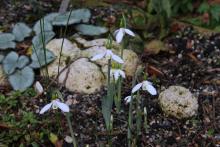
Toole (not verified)
Eranthis Cyclamen coum
Sat, 07/12/2014 - 2:54pmEranthis Cyclamen coum
Cyclamen coum 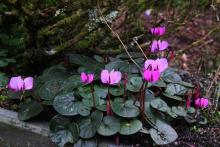
Corydalis hybrid that's continued to flower so far all through our mild winter
Trond Hoy
Spring flowers are always
Sun, 07/13/2014 - 10:24amSpring flowers are always welcome! (But as I mentioned in another thread I am glad it still is a few months away!)
Although I also experience mild winters (not as mild as yours though Dave) I couldn't grow plants like that in December because the level of light is too low.
Fermi de Sousa
It's "spring bulb time" even
Mon, 08/25/2014 - 6:15amIt's "spring bulb time" even though winter doesn't officially end till next week
cheers
fermi
Margaret Young
So many good plants flowering
Mon, 08/25/2014 - 6:24amSo many good plants flowering in Australia and New Zealand already - makes you wonder what will be left for the "real Spring" .....Yikes!
Fermi de Sousa
IMYoung wrote:
Mon, 08/25/2014 - 6:40am[quote=IMYoung]
So many good plants flowering in Australia and New Zealand already - makes you wonder what will be left for the "real Spring" .....Yikes!
[/quote]
Yes, it's always interesting to see what's in flower for the various Flower Shows! The next FCHS Show is on September 6 and 7 - some years there can be many less daffodils - either being too early or too late!
Here are some pics from our recent AGS Vic Group meeting,
cheers
fermi
Toole (not verified)
IMYoung wrote:
Tue, 08/26/2014 - 3:16am[quote=IMYoung]
So many good plants flowering in Australia and New Zealand already - makes you wonder what will be left for the "real Spring" .....Yikes!
[/quote]
There is still plenty to follow Maggi .........Hopefully !
The mainstay of colour at the moment are the Hellebores.Here's a small selection for the moment .I'll post the rest in a day or two.
Margaret Young
Hope you're right, t00lie -
Tue, 08/26/2014 - 3:50amHope you're right, t00lie - Ian the Christie kind wants plenty to see on his next visit !
Toole (not verified)
IMYoung wrote:
Thu, 08/28/2014 - 1:24am[quote=IMYoung]
Hope you're right, t00lie - Ian the Christie kind wants plenty to see on his next visit !
[/quote]
A couple more Hellebores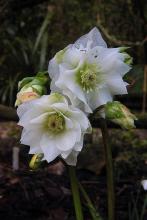
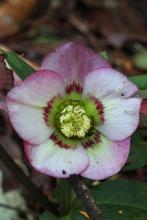
Early Trilliums

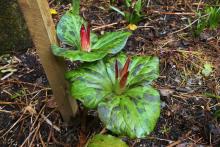 A lovely Narcissus hybrid
A lovely Narcissus hybrid 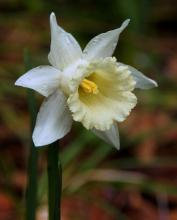
More Narcissus raised from seed.
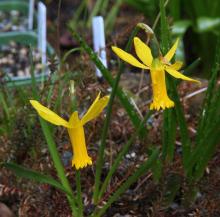
Primula allionii
Fermi de Sousa
Maggi,
Thu, 08/28/2014 - 6:46amMaggi,
there'll still be plenty for Ian (the Christie kind) to see when he visits (I think he intends stopping here on the way to NZ) - but this is the "busy" time of the year for flowers!
Here's the best flowering I've had on Moraea macronyx
Only when I was pollinating them I realized that there were 2 types of flowers - the usual one seems to have brown marks on the yellow crest whereas on one plant they are absent! As these were grown from seed I guess it's just variation within the species,
Also in flower amongst the pots, was this Mediterranean romulea from the Canary Islands, Romulea hartungii (syn R. grandiscapa)
And from South America, this yellow ipheion, now called Nothoscordum felipponei,
cheers
fermi
Margaret Young
Stunning Moraea, fermi.
Thu, 08/28/2014 - 6:59amStunning Moraea, fermi.
Good to hear you are confident on having some flowers left for Ann and Ian on their travels - they are already looking forward to the trip !
Ian will be appearing at the NZAGS Study Day of course - see details here : www.nzags.com
Fermi de Sousa
Tulipa bakeri's first flower
Fri, 08/29/2014 - 7:58amTulipa bakeri's first flower this year
Gagea fibrosa
A bed in the garden with some daffs at its base - Narcissus 'Kedron; (orange) and 'Sailboat' and way too many euphorbias!
cheers
fermi
Margaret Young
"......and way too many
Fri, 08/29/2014 - 9:13am"......and way too many euphorbias!"
Oh dear, I read that as too many euphorias ....thought you were protesting too much!
Not to self: pay proper attention to reading.
Fermi de Sousa
IMYoung wrote:
Sat, 08/30/2014 - 6:22am[quote=IMYoung]
"......and way too many euphorbias!"
Oh dear, I read that as too many euphorias ....
[/quote]
That happens too with all the flowers at this time of year
For example, these Romulea sabulosa have been flowering all month!
I love the satin sheen to the petals when the sun hits them,
cheers
fermi
Fermi de Sousa
I grew this little sweetie
Tue, 09/02/2014 - 8:34pmI grew this little sweetie from AGS Seedex 2008 seed as Muscari "ex Gul" - "Gul" was a selection made by Rannweig Wallis, but I believe it has been re-named 'Gul Delight'
cheers
fermi
Toole (not verified)
Fermi wrote:
Fri, 09/05/2014 - 2:18am[quote=Fermi]
I grew this little sweetie from AGS Seedex 2008 seed as Muscari "ex Gul" - "Gul" was a selection made by Rannweig Wallis, but I believe it has been re-named 'Gul Delight'
cheers
fermi
[/quote]
I have something similar Fermi in an unlabeled pot...(I'll use your foliage shot to try and hopefully locate it .... )
)
Here's a nice clump of Corydalis x 'George Baker' originally from seed.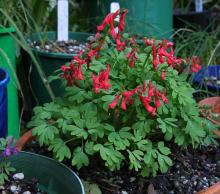
Toole (not verified)
Threw some used potting mix
Tue, 09/16/2014 - 10:39pmThrew some used potting mix on the surface of a pot of Shortia glacifolia a few months ago and it's rewarded me by at least doubling the number of flowers this season.......
Fermi de Sousa
Toole wrote:
Thu, 09/18/2014 - 3:43am[quote=Toole]
Threw some used potting mix on the surface of a pot of Shortia glacifolia a few months ago and it's rewarded me by at least doubling the number of flowers this season.......[/quote]
Good work, Dave,
and it looks like a couple of monocot seedlings have germinated out of the used potting mix!
There are still daffs coming into flower here but the tulips are making their presence felt! Here is Tulipa kolpakowskiana
Tulipa clusiana
cheers
fermi
Toole (not verified)
Lovely Tulipa clusiana Fermi
Tue, 10/07/2014 - 7:08pmLovely Tulipa clusiana Fermi .
Here's a young plant of Primula aureata growing in the cool crevice bed.
Cheers Dave.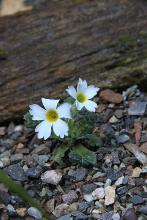
Toole (not verified)
Been an extremely mild start
Tue, 06/09/2015 - 4:01amBeen an extremely mild start to winter down here in New Zealand. Reached 18c today and we are yet to experience a frost in our patch although there is a bit of white stuff appearing in the garden .......
Fermi de Sousa
Likewise, Dave
Thu, 07/02/2015 - 1:48amLikewise, Dave
cheers
fermi
Toole (not verified)
Very nice Fermi --I have
Sat, 07/04/2015 - 6:56pmVery nice Fermi --I have quite a few Galanthus in bud and fingers crossed ,hopefully G.'Wendy's Gold' will show some colour in the next week or so.
A number of hellebores are in currently in flower ......Here's small sample.A couple of 3 year old seedlings look like they will have their first bloom...
Fermi de Sousa
Some very attractive forms
Tue, 07/07/2015 - 7:59pmSome very attractive forms there, Dave.
In our winter garden we have a couple of Sternbergia candida open and the promise of more to follow,
A dwarf bearded iris has overgrown the bulbs and provide some protection from summer rain ....and echidnas!
A true crocus which is in flower in a pot is Crocus rujanensis, grown from seed from NZAGS
cheers
fermi
Fermi de Sousa
A clump of Acis tingitana
Tue, 07/14/2015 - 7:42pmA clump of Acis tingitana flowering now in the rock garden
The Juno Iris planifolia is in bloom in a sandy, raised bed,
cheers
fermi
Fermi de Sousa
In our garden this afternoon,
Sun, 07/19/2015 - 6:23amIn our garden this afternoon, a young plant of a dryandra which is now included in Banksia, but I can't find the species name!
cheers
fermi
deesen (not verified)
Banksia dryandroides by any
Mon, 07/20/2015 - 4:44amBanksia dryandroides by any chance? (he says without any knowledge at all!)
https://en.wikipedia.org/wiki/Banksia_dryandroides
Toole (not verified)
Nice Banksia Fermi
Sun, 08/02/2015 - 1:56amNice Banksia Fermi
Our local botanical park has a small number of different species growing in the Australian Border ,(of course..Lol),however nothing like your 'model' above......
A few plants in flower here with Galanthus making a show, the best to my mind being a NZ selection G.elwesii Emerald Hughes which has large flowers and quick to clump.Unfortunately I'm always lifting and planting side bulbs elsewhere in the garden so the clumps don't reach a reasonable size.....
Promise of things to come .Scoliopus bigelovii in bud and with a sunny 14c forecast tomorrow some should open.
Cheers Dave.
Fermi de Sousa
Toole wrote:
Sun, 08/02/2015 - 5:53am[quote=Toole]
A few plants in flower here with Galanthus making a show, the best to my mind being a NZ selection G.elwesii Emerald Hughes which has large flowers and quick to clump.
[/quote]
Hi Dave,
I wonder if that selection has made it across to "the West Island"? G. elwesii seems to do the best in our garden, but a few others are established like this one which I thought might be Galanthus plicatus but Anthony on SRGC Forum has asked "is it?" - I don't know, I'm not a galanthophile!
cheers
fermi
Margaret Young
I'm no 'drop fiend either,
Sun, 08/02/2015 - 8:22amI'm no 'drop fiend either, fermi - but the foliage looks plicate to me- but I suppose it may be a hybrid? I've sought advice from a real galanthophile, to see what she has to say!
Margaret Young
Emma Thick thinks it's a
Sun, 08/02/2015 - 10:13amEmma Thick thinks it's a plicatus..... in the absence of a photo to show how the leaves are arranged. Marcus Harvey thinks it may be a hybrid.
Toole (not verified)
I can't remember whether G
Mon, 08/03/2015 - 1:54amI can't remember whether G.elwesii Emerald Hughes sets seed in our garden Fermi however I'll keep a look out for you in a few weeks if you like.
Here's some more 'white fever' .The first 3 pics show some variations in one pot of G.elwesii received from a good friend.
Followed by G.nivalis 'Viridapice' and close up , which is another terrific increaser here.
Sorry the rest I've forgotten the names of .......
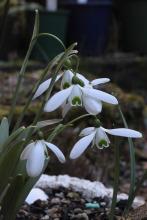
Cheers Dave.
Toole (not verified)
A couple more Hellebores are
Thu, 08/06/2015 - 1:54amA couple more Hellebores are out .
Thought I had managed to collect all the seed set last year however while cutting back the old leaves a few days ago I located heaps of seedlings in a number of beds .....
This little fella has finally opened .Scoliopus bigelovii .I'll try and move a bit of pollen around once another flower comes into bloom in the hope a little seed is produced.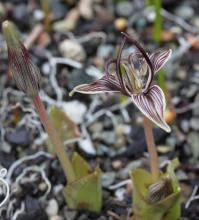
Cheers Dave.
Lori S. (not verified)
Lovely! Wonderful to have
Thu, 08/06/2015 - 4:56pmLovely! Wonderful to have them self-seeding!
The Scoliopus is an amazing thing... I expect it's not likely hardy here though.
Toole (not verified)
Lori S. wrote:
Thu, 08/06/2015 - 6:34pm[quote=Lori S.]
Lovely! Wonderful to have them self-seeding!
The Scoliopus is an amazing thing... I expect it's not likely hardy here though.
[/quote]
Thanks Lori
Not sure about the Scoliopus as it's a woodlander from California.
Are Hellebores hardy with you ?.
Lori S. (not verified)
A small number of hellebores
Thu, 08/06/2015 - 9:33pmA small number of hellebores have been hardy here for some years now and I planted a few more last year.
Toole (not verified)
Lori S. wrote:
Fri, 08/07/2015 - 1:25am[quote=Lori S.]
A small number of hellebores have been hardy here for some years now and I planted a few more last year.
[/quote]
I'll P.M. you Lori
Toole (not verified)
Raised from seed as Crocus
Wed, 08/12/2015 - 2:19amRaised from seed as Crocus biflorus ssp weldenii .
Clump of Narcissus cyclamineus hybrid.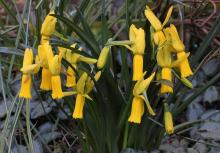
Toole (not verified)
Saxifraga grisbachii 'Wisley
Wed, 08/12/2015 - 2:29amSaxifraga grisebachii 'Wisley Variety' in the crevice sand bed is on the move.What a wonderful colour combination of beautiful silver rosettes with the commencement of furry ruby pink stems.
Pages